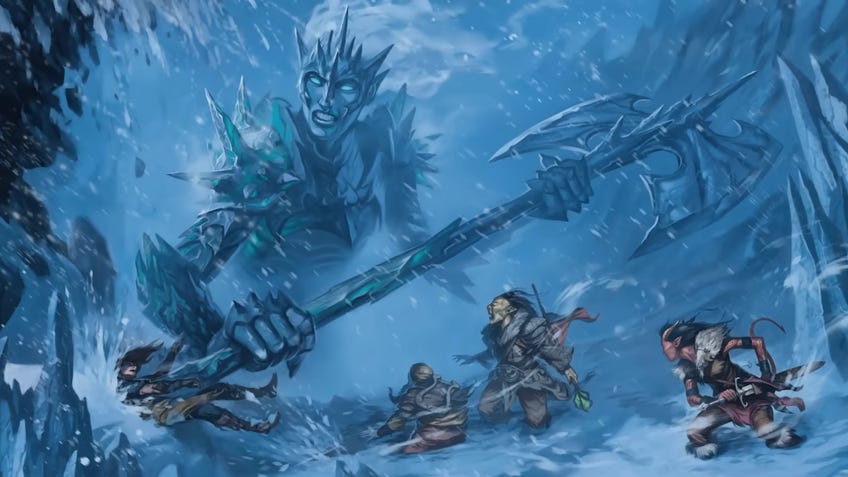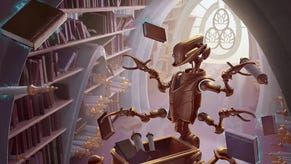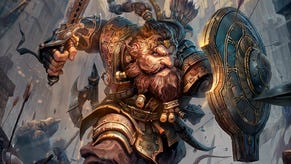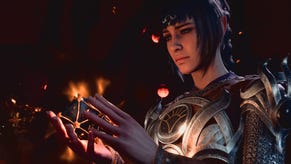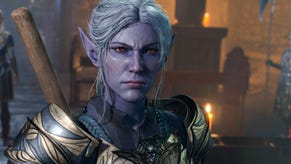Dungeons & Dragons maker will revise AI-processed artwork in upcoming sourcebook
Midjourneys in the Forgotten Realms.
Upcoming Dungeons & Dragons sourcebook Bigby Presents: Glory of the Giants will go back to the editors prior to release after fans noticed an illustrator submitted artwork partially generated by AI technology.
Ilya Shkipin stated in a now-deleted thread on X (formerly Twitter) that he used AI tools to achieve “certain details or polish and editing” for a handful of digital illustrations commissioned by publisher Wizards of the Coast. The pieces were apparently not created whole cloth by AI aggregate bots but instead used to “enhance” the compositions largely created by Shkipin’s hand.
Wizards was apparently not aware of Shkipin’s process, nor could they tell that the submitted artwork was partially created via AI. After news of Shkipin’s choice spread online, the publisher released a short statement on social media explaining their position:
“Today we became aware that an artist used AI to create artwork for the upcoming book, Bigby Presents: Glory of the Giants. We have worked with this artist since 2014, and he’s put years of work into books we all love,” the post reads. “While we weren’t aware of the artist’s choice to use AI in the creation process for these commissioned pieces, we have discussed with him, and he will not use AI for Wizards’ work moving forward. We are revising our process and updating our artist guidelines to make clear the that artists must refrain from using AI art generation as part of their art creation process for developing D&D art.”
The same day that post went live, Shkipin posted two short sentences to X commenting on the matter and sounding much like a chastened child. “Deleted previous post as the future of today's illustrations is being discussed,” he said initially, before following up with “Illustrations are going to be reworked.” When reached for comment on the oversight process, how Wizards will revise its policies and when the public will be able to read such a document, a representative simply pointed Dicebreaker towards the already public social media post.
An initial report from Gizmodo shows the AI-generated frost giant next to Shkipin’s work-in-progress sketch, highlighting what was added. It’s clear from public online conversations that the artist contributed a significant amount of personal work creating the final images, but neither he nor Wizards of the Coast publicly disclosed the use of algorithmic tools that use AI technology.
Wizards of the Coast has no publicly available policy on the use of AI-generated art in their official products - sourcebooks, adventures, merchandise, etc. - but a growing number of tabletop publishers and designers are weighing in on the controversial technology. Paizo, the company responsible for Pathfinder and Starfinder, recently foreswore the use of AI in any of their work. Independent artists have been facing this question in their own work and those of their peers ever since the technology gained widespread use off the back of popular applications such as Midjourney and ChatGPT.
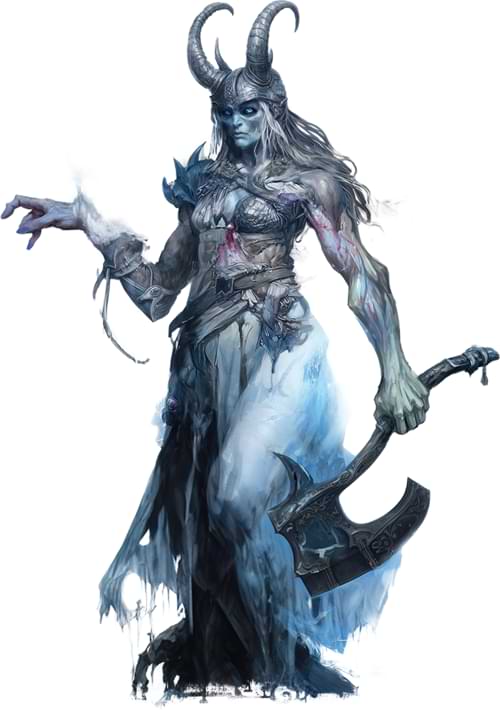
It should be noted that AI-powered tools already exist in Adobe Photoshop and other widely used editing software. The difference is that many new art generators, such as the Pika Labs AI that Shkipin reportedly used often, are machine learning tools fed massive data sets that include artwork from countless other artists - mostly without their permission or benefit.
Shkipin’s dubious creation of the Frostmourn and other giants in Bigby Presents is not a matter of taste - though the excessive greebling and tell-tale AI distortion of limbs and fine features leave much to be desired - but the setting of a dangerous standard by the most successful and lucrative tabletop RPG in the industry. Artists whose livelihoods depend on commissioned work are already worried about AI replacing them with ‘good enough’ facsimiles. They don’t need tech-assisted obsolescence making their field any more precarious.
